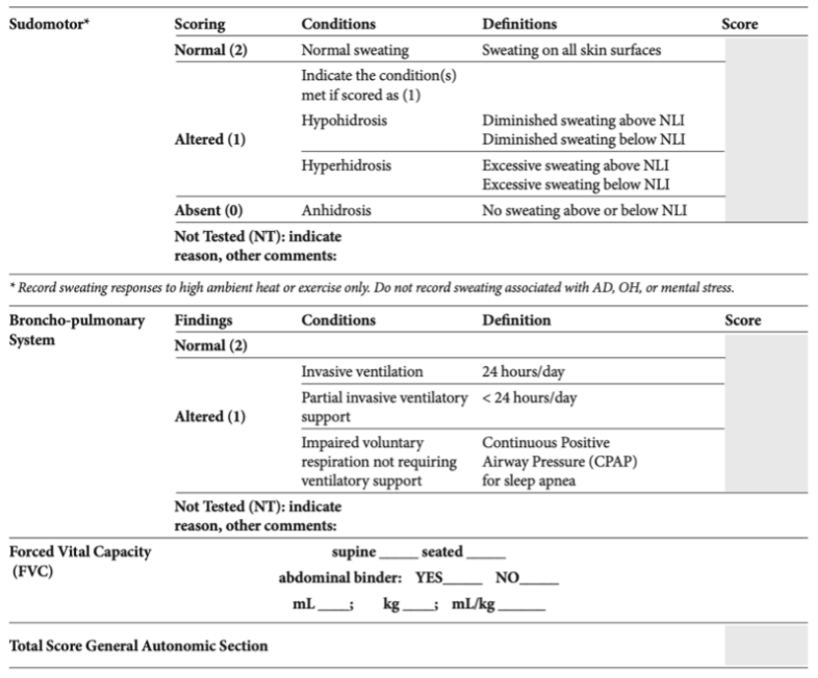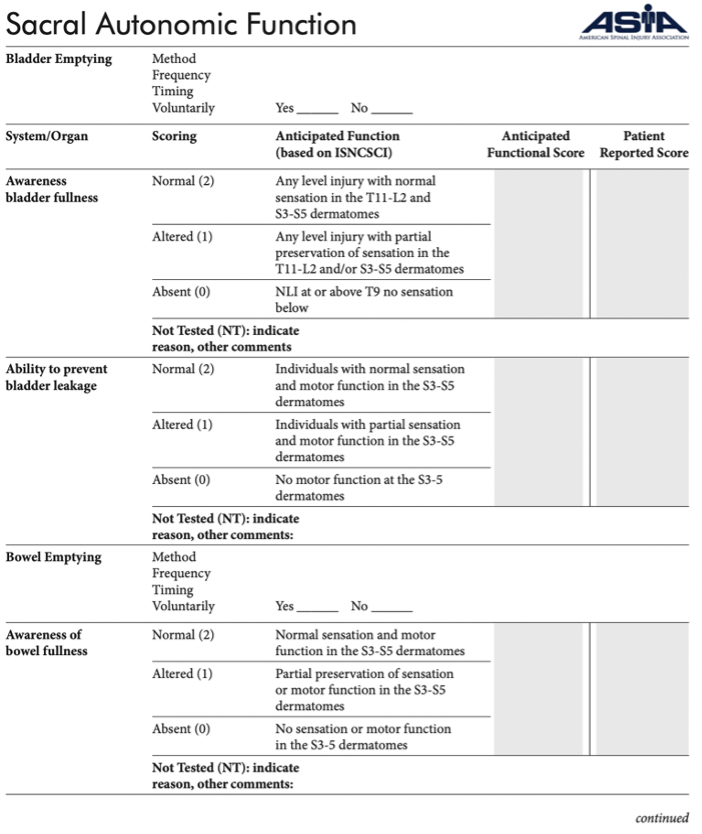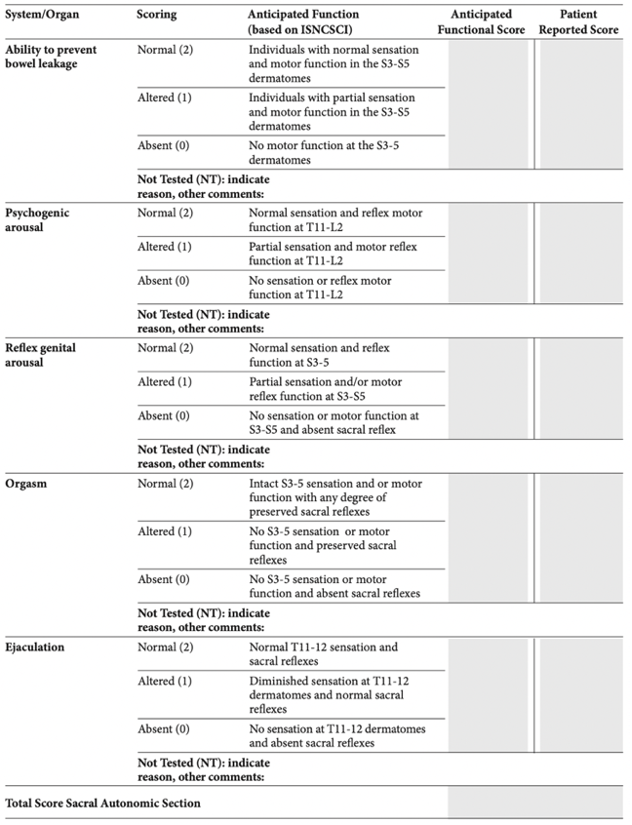How to Assess – Autonomic Assessment Form
The complexity of the autonomic nervous system and its involvement in almost every system in the body makes selecting appropriate autonomic function tests for individuals with SCI difficult (Krassioukov et al. 2007). It is not clear how many practitioners in SCI care have experience with testing in this area, even if the operational definitions of autonomic dysfunction are defined (Krassioukov et al. 2007). Inattention to autonomic function post-SCI can pose significant risk to a person’s neurological function and quality of life (Krassioukov et al. 2007). During the last decade, the assessment of individuals with SCI has improved significantly, though autonomic screening remains somewhat difficult to complete. Previous research has recommended that the assessment of autonomic functions be a part of clinical evaluation of individuals with SCI, in addition to already established motor and sensory assessment (Krassioukov et al. 2007).
The International Standards to Document Remaining Autonomic Function after Spinal Cord Injury (ISAFSCI) was developed by a working group of the American Spinal Injury Association (ASIA) and International Spinal Cord Society (ISCoS) (Wecht et al. 2021; Alexander et al. 2009; Krassioukov et al. 2012). The ISAFSCI is an assessment designed to determine which autonomic functions are intact, impaired or lost following SCI, and the Assessment form consists of 2 major sections – General Autonomic Function, and Lower Urinary Tract, Bowel, and Sexual Function (Krassioukov et al. 2012).




